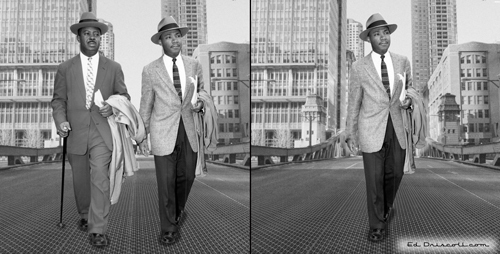The Truth, History, and the Movie Selma

The nationwide release of the film Selma, which concentrates on Martin Luther King, Jr. and the 1965 Selma marches for the cause of African-American voting rights in the segregated South, has been received with much fanfare and enthusiastic accolades. It is likely to be short-listed for “Best Picture” from the voters in this year’s Academy Awards.
Questions have been raised, however, about the film’s historical accuracy in its depiction of LBJ’s relationship to Dr. King, and his role in securing the Voting Rights Act, first by Joseph A. Califano Jr., chief advisor for domestic affairs to Johnson, and then by many others.
A major distortion that film critics did not notice was the absence of Ralph Abernathy, who, as King’s chief lieutenant, was always by his side during the marches. King said that he “was the best friend I have in the world”:
Dr. Abernathy and King travelled together, often sharing the same hotel rooms, jail cells, and leisure times with their wives, children, family, and friends. They fought together against segregation and discrimination, helped to establish new legislation, and tried to instill a new sense of pride, dignity, and self-worth in African Americans.
Abernathy suffered bombings, beatings by southern policemen and State Troopers, 44 arrests, and daily death threats against his life and those of his wife and children. His family’s land and automobile were confiscated and he had to re-purchase his automobile at a public auction. Some of his colleagues and some volunteers in the civil rights movement who worked with him were murdered.
Why, then, is Abernathy not shown at King’s side during the marches in Selma? Instead, he has been removed in much the same way they did it in Stalin’s Soviet Union, where photos of purged leaders who stood next to Stalin were erased and encyclopedia entries about them taken out of new editions.
While there are some sightings of Abernathy, his children stress that “the depiction of the role of [our] father is grossly mischaracterized.” Not only were King and Abernathy partners in the creation of the Selma protests, Abernathy, as journalist Jim Galloway writes, was even taken out of the opening scene at the White House, depicted as a one-and-one meeting of King with LBJ, which actually occurred with Abernathy present. In fact, King never went to the White House without Abernathy.
Selma’s director, Ava DuVernay, apparently gave in to the wishes of the King family that Abernathy’s role be diminished. Galloway suggests this took place because of their anger at what Abernathy wrote in his 1989 autobiography, in which he claimed that the night before he was assassinated in 1968, King had spent the night with two women. The film does let viewers know that King was not faithful to his wife, but the King family never forgave Abernathy for what he wrote. Abernathy’s own son has a different suggestion, which is that today people like a simplification of history and only have room for one hero to celebrate, who supposedly alone created the movement he led. King, therefore, was the “only symbol of the movement.”
Ronald Radosh's Blog
- Ronald Radosh's profile
- 15 followers



